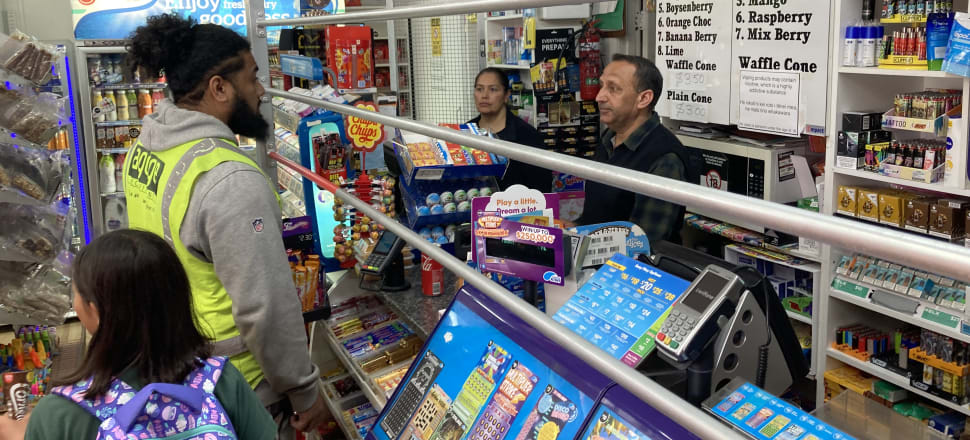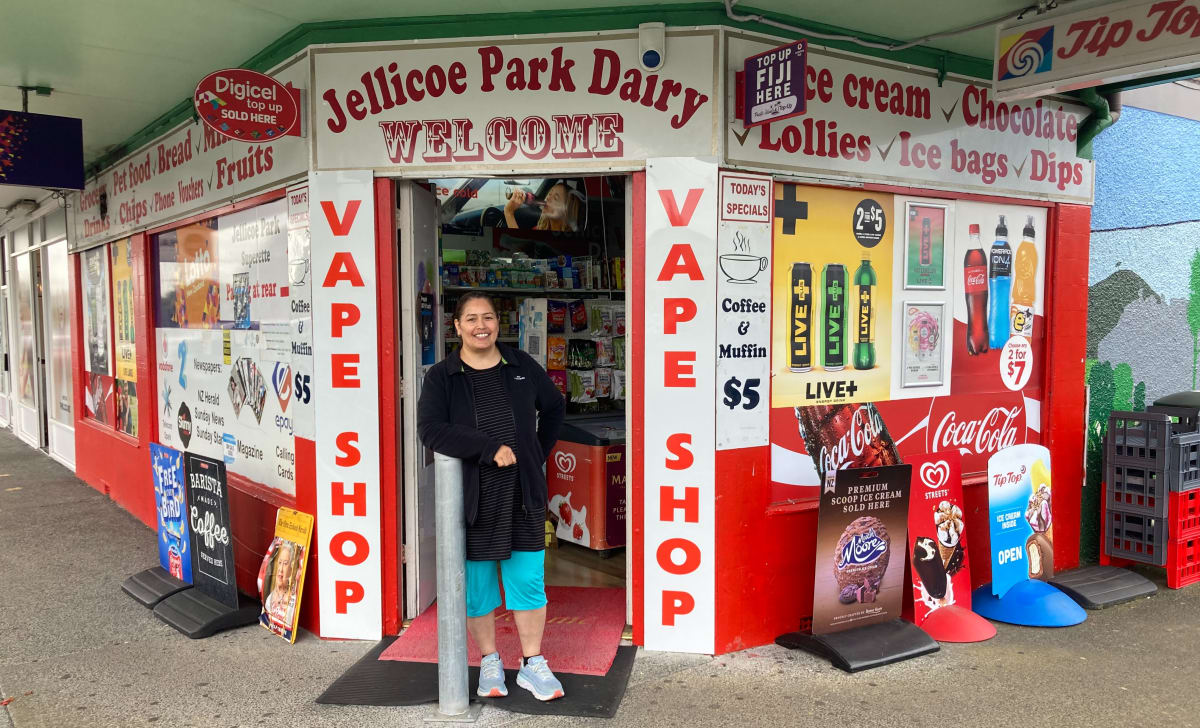
A dairy owner says she's traumatised after being robbed by five youths – but police have written saying they can't track down the offenders. New youth offending statistics show fewer children and young people in court – but she says it's just police laying fewer charges.
Ram raids and robberies by young offenders have become a hot-button political issue, and have already cost one police minister her job. Ministers and police say there is no youth crimewave; that ram raids are a localised spike driven by social media.
And this week, they were backed by new Ministry of Justice statistics showing a decline in the numbers of 10-16 year-olds facing charges.
But worried retailers aren't convinced.
Onehunga dairy owner Kamla Sokhal was robbed in June by a group of five youths, who jumped the counter just after she closed the Lotto till at the end of a $10m jackpot Saturday. The robbery traumatised her, she says.
"The Lotto cut-off time was 7.30pm Just after we finished that, they came in. It was just a second. They straight away jumped inside the counter."
Initially two jumped the counter, while two more kept watch outside. The fifth stayed at the wheel of their stolen car. They wore black hoodies and their faces were covered.
"I think I didn't know what was happening for a few seconds," Sokhal says. "I started shouting or screaming something to my husband."
The young men only got away with a few hundred dollars, she says. Not so many customers pay cash, these days, they all use cards.
But she says she still feels traumatised, and struggles to trust young people. "New faces make us scared," she says. "There's a kind of trauma in my mind about what happened."
She and her husband Karnail Singh have now spent $4000 installing a steel bollard outside the door, and a cage around their counter.
Last week, she received a letter from police: they had not been able to track down and charge the five youths. "They've already closed the case," she says.
"It's very annoying to us because we're a small business. There's not much profit, you know, and we just can't afford all this protection."
She questions whether youth crime is really down – or whether it's just police resolution rates.

That's a legitimate question. Crime is counted in three main ways: community surveys of victims, numbers of crimes reported to police, and alleged offenders charged in court.
Victimisation surveys don't identify the offender or their age. And the Police and Justice figures document only reported youth crime in which police have identified an offender.
According to the new Ministry of Justice figures, there were 1,344 children and young people (aged 10-17) who had charges finalised in court in 2021/22. Despite the inclusion of 17-year-olds since 2019, this is still 25 percent fewer than in 2017-18.
Justice Minister Kiritapu Allan acknowledges that how safe people feel is as important as what the statistics show. "I consider that is a really appropriate measure to apply," she says. "For example, I've just been on the streets in Whakatane, and you're talking to shop owners who are raising real concerns.
"Yes, the trends show that crime is going down in some of these areas. That said, we are seeing particular spikes in some areas, which are causing real anxiety for New Zealanders. I think we've been quite proactive about our response to that."
She says the Government has a lot more work to do around crimes like ram raids and smash and grabs, that are causing concern for New Zealanders. "It's something that myself and others are significantly concerned about," Allan says. "We can't hang up our aprons, so to speak, and say that the job's done."
The Justice stats show the numbers of 10-16-year-olds in court have decreased 10 percent a year for the past five years, down to 900 in 2021/22. Children and young people make up a very small proportion of all people with charges finalised each year, accounting for only 2 percent in 2021/22.
And Police say their figures also show reported youth crime is actually down on a decade ago.
"We are aware of a recent spike in offending where young people have put themselves and others in harm’s way through high-risk activities such as ram raids and aggravated burglaries," a spokesperson says.
"The recent offending is driven by a number of factors, including the use of social media to promote their criminal offending and gain notoriety. It also can stem from young people exposed to a negative home environment, disengaged from school and their communities, and the monetary gain from stealing.
"Youth crime is a complex matter requiring coordinated cross-agency partnership with communities, iwi, and social service providers. Police cannot solve this alone. We are committed to working with our partners and communities to prevent youth offending, support victims of crime, and hold young offenders to account in a meaningful and effective way."
Police say a significant proportion of children and young people who offend are successfully dealt with outside the formal justice system. Minor offences are generally dealt with by Police Youth Aid officers through an Alternative Action Plan. The officers work with young people, their families, communities and youth workers to provide interventions and to repair any harm done to others.
If the crime is more serious, the child or young person will go through a Family Group Conference or the Youth Court (or adult court) in the most serious instances.
Corrections Minister Kelvin Davis says the recent spate of ram raids has been a spike, not a trend. "That is in no way minimising the impact on those affected, but these recent statistics confirm the fact that overall youth crime has been falling for many years.
"That has largely been through great work in the intervention space by many agencies and community organisations. A key part of our response to the recent number of ram raids is to ramp up those types of interventions, because we know they work."







